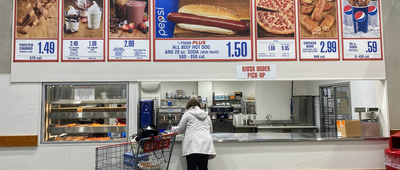Dreaming of ringing in the holidays with a sparkling diamond? Multiple surveys show that December is the most popular month of the year to get engaged. Finding the perfect diamond with just the right price tag is no easy task, however. Sure, you might be able to judge among the few affordable options that your favorite jeweler stocks. Factor in the online world, though, and there are thousands of diamond rings for the picking. Online jewelry dealers tend to be more competitively priced and may offer diamond rings of higher quality than pieces available locally for the same money.
To choose a worthy specimen at a good price, you need a firm grasp of the five C's: clarity, color, cut, carat, and certification. Only a millionaire can afford the best clarity, best color, and a whole lot of carats. But you can balance these characteristics to get the best value.
Clarity.
Unless you plan to examine the stone under a diamond loupe regularly, insisting on a high clarity grade is probably a waste of money. Spend those hard-earned dollars instead on a low clarity diamond, such as SI1 or SI2, and try to ensure that the flaws are white, not black. Imperfections in the highly refractory, faceted part of the stone will be mostly impossible to see except in extreme cases, whereas flaws in the center of the diamond may be more visible. Most diamond dealers are very happy to inspect diamonds for potential customers to verify whether they are "eye clean," which means that the inclusions, or defects, in the stone are not visible without the use of a magnifying loupe.
Color.
Look for the lowest possible color grade that still appears white. A D-color (or colorless) diamond costs a bundle, but H/I/J-color stones also look very bright and white if they have an excellent quality cut. The difference between those colors and an E, F, or G can be very subtle. In the end, the perceptible color depends on how well cut the diamond is.
Cut.
Stones with the very best cut sparkle the most, by far. Dull diamonds are dull because of bad cut. A quality cut boils down to math, and resources such as the Holloway Cut Adviser can help you learn exactly what makes an excellent cut.
Carat.
Once you set constraints for the above three categories, the number of carats, a measure of weight, is strictly a matter of budget. Although you may think big is best, a marginally larger stone of lesser cut quality will not look as stunning as a slightly smaller stone with a perfect cut. The tiny size difference is not what you notice -- the light refraction is. Additionally, each half-carat increment represents a subtle price increase. Try distinguishing between a 1.5-carat stone and a 2-carat stone. The difference isn't obvious, especially when they are not side by side. This chart shows the differences in size based on weight.
Certification.
Choose only a diamond that comes with a certificate. Otherwise, there's no guarantee that the stated value is correct and the C's discussed above are reported accurately. Certifying agencies vary in terms of how generously they rate stones, but the most commonly recommended diamond grading laboratories are the American Gem Society, or AGS, and the Gemological Institute of America, or GIA.
Bottom Line.
It's difficult to provide much guidance on pricing, because every diamond is unique and the market ebbs and flows. That said, a 1-carat, SI2, E-color gem with an excellent cut typically sells for $4,000 to $5,000, according to Pricescope, a reputable online source of information about diamonds.
Cut should never be compromised, because this is what makes the diamond sparkle. Go with a lower clarity, because there's no point in paying for something that isn't noticeable. Color is more important than clarity but far less important than cut. Can you tell the difference between an E-color stone and a J? Probably yes. But it really isn't that obvious, and most women would probably prefer a bigger diamond with a lower color grade over a smaller diamond with a higher color grade. Jewelry stores and websites such as White Flash, Blue Nile, and Good Old Gold often have diamond experts on staff who can help you find the right balance.








